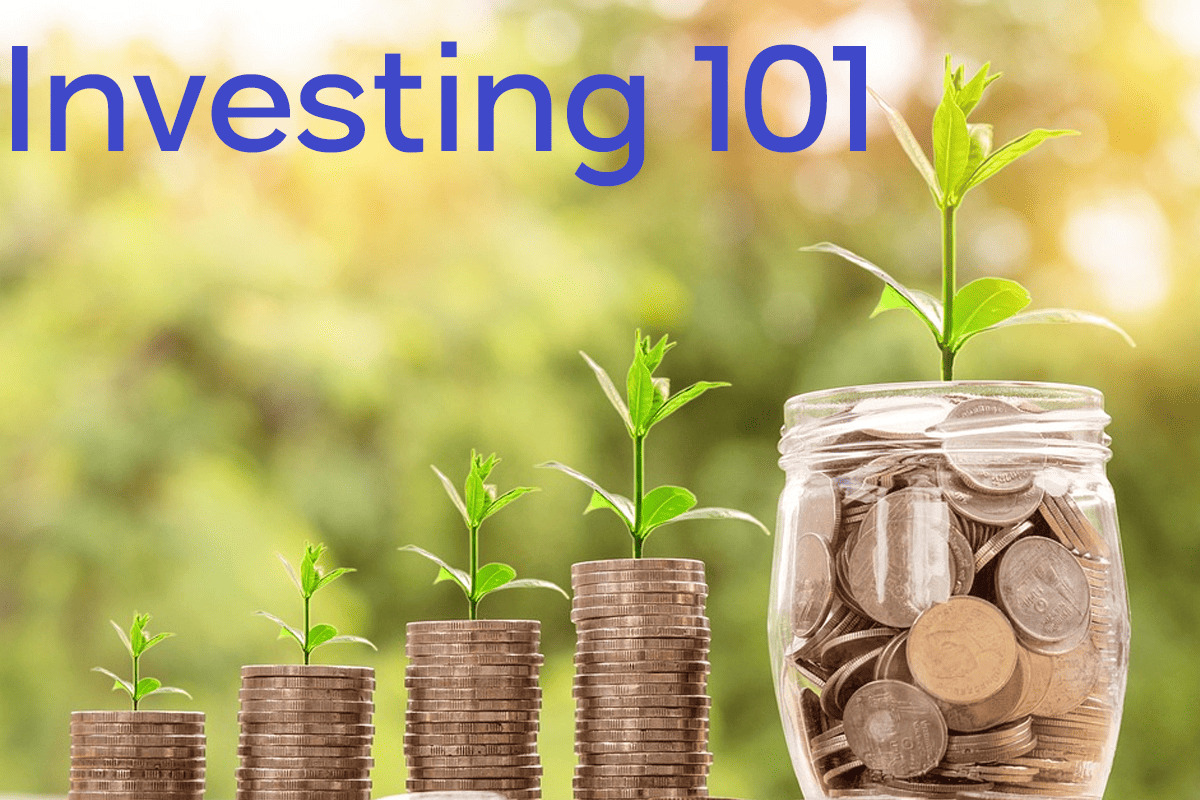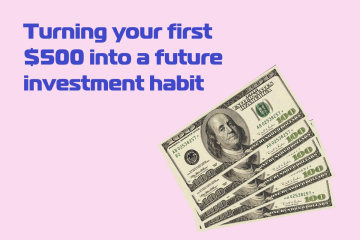The Fear That Stops You From Winning
You’re trying to do the right thing, right? You’ve managed to scrape together a bit of cash—maybe you hit that bonus, or finally paid off a nagging student loan (Need help? Check out [Internal Link to How to Pay Off Credit Card Debt Fast]). And you know, deep down, that leaving it in a savings account is just watching it shrink. Inflation is a thief.
So you know you should invest. But you hesitate. Why? Because the finance world is a mess of contradictions, and every time you start reading, you run into panic. One headline screams “Recession is Coming!” and the next tells you to “Buy, Buy, Buy!” It’s confusing. It’s paralyzing.
Honestly, the biggest financial challenge for U.S. and developed countries citizens seeking independence isn’t a lack of money; it’s investment anxiety. It’s the fear that you’re gonna be the one who buys at the peak, only to watch your hard-earned money disappear overnight. Trying to outsmart the market is emotional torture. But that emotional turmoil is exactly what keeps millions of people sidelined, earning next to nothing. We aren’t here to time the market; we’re here to build a Recession-Proof Portfolio that stays strong regardless of the news cycle.
This could be you: You open your brokerage app on a day the news reports a 500-point drop. Your mind immediately screams: Get out! Save what’s left! So you click ‘Sell,’ lock in the loss, and sit on the cash, waiting for things to “calm down.” But the market recovers slowly over the next two years—without you. You missed the sale. You missed the rebound. And that small, fear-driven mistake costs you way more than the initial drop ever would have. We need a system that prevents that gut-punch reaction.
7 Steps to Building a Recession-Proof Portfolio That Won’t Break
The beautiful, slightly boring truth is that winning at investing isn’t about being brilliant. It’s about being boring and consistent. It’s about designing a portfolio that’s resilient enough to weather those brutal downturns without triggering your emotional panic buttons. The goal isn’t zero losses; it’s maximum long-term survival and growth.
I remember my first real market scare vividly. It was the “dot-com bubble” bursting in the early 2000s. I was still green, and I was holding a few individual tech stocks (dumb, I know). I watched my balance drop so fast it made me feel physically sick. Unlike my later mistake in ’08, this time I was so paralyzed I couldn’t even sell. I just stared at the screen for months. That forced inaction, that accidental discipline, actually saved me. When the market finally started crawling back up, I realized the smartest thing I had done was nothing. That lesson—that inaction is often the best action—is why I use these steps to build automated portfolios today.
Step 1: Get Your Head Right: Figure Out the Time Horizon
This is the most important, least sexy step.
Why this matters: If your goal is retirement 20 years from now, you’re playing a long game. The next recession is just a blip, a sale price. If your goal is a new car next year, you shouldn’t be invested at all. Your time frame determines your risk level. Period.
Simple action: Divide your money into two piles: money you need in under five years (keep this safe in cash/CDs) and money for seven years or more (this is your investment pile). Do not cheat.
Step 2: Go Wide with Passive Indexing
Stop looking for the next Apple. Buy the whole store instead.
Why this matters: You don’t need to be a stock-picking genius. The vast majority of professional fund managers—the guys with PhDs and fancy offices—fail to beat the market benchmark (like the S&P 500) about 85% of the time over a 15-year period (S&P Dow Jones SPIVA report). [DoFollow Link to S&P Dow Jones SPIVA report]. So why bet on the 15%? Passive investing means buying low-cost index funds or ETFs that track the entire market. This move instantly diversifies you across hundreds of companies.
Simple action: Look up the symbol for a Total Stock Market Index ETF (like VTI or ITOT). Set up an automatic, recurring purchase every single month. That’s the core of your resilient portfolio.
Step 3: Diversify Across the Globe
Don’t just buy U.S. stocks. The world is huge.
Why this matters: When the U.S. economy struggles, other markets might be booming. If 100% of your money is tied up in one country, you’re not diversified. You want to make use of global growth to lessen (or reduce) your risk at home.
Simple action: Dedicate 20% to 40% of your stock allocation to an International Stock Index ETF (like VXUS or IXUS). This is how you truly build a global, resilient portfolio.
Many people don’t realize that international diversification isn’t just about market returns; it’s about tax treaty benefits and estate planning. For U.S. investors, holding international stock funds (like Vanguard’s) in a taxable brokerage account can sometimes qualify you for the Foreign Tax Credit on your tax return. This credit directly reduces your tax bill, preventing double taxation from foreign countries. It’s a huge, under-talked-about benefit of going global, and the IRS lays out the rules clearly in IRS Publication 514.
Step 4: Balance with Bonds (The Recession-Proof Factor)
Bonds are boring. That’s why you need them.
Why this matters: Stocks and bonds generally move in opposite directions. When the stock market is crashing (bad times), bonds often hold steady or even go up because they’re seen as a safe haven. This stability helps you weather the storm.
Simple action: Follow the classic 60/40 rule for starters (60% Stocks, 40% Bonds). Buy a Total Bond Market ETF (like BND or AGG). Rebalance this ratio once or twice a year, not monthly.
Step 5: The Retirement Account Filter
Make sure you’re using the right account for your money.
Why this matters: Taxes will destroy your returns. You have to use tax-advantaged accounts first. The government literally gives you a huge tax break to encourage you to save for retirement. You shouldn’t be leaving that free money on the table.
Simple action: Put your investments in this order:
- 401(k) up to the full employer match (that’s 100% immediate return!). Always, always, always max out your employer’s 401(k) match first. (See our guide on [Internal Link to 401(k) Matching Secret]).
- Roth IRA (tax-free growth and withdrawals later).
- HSA (if you have one, triple-tax advantaged).
- Then, put anything extra into a standard Taxable Brokerage Account.
Step 6: Make Rebalancing Your Only Trading Move
Stop checking the market daily. Your only job is maintenance.
Why this matters: Over time, your winning investments grow faster than your losing investments. If you start at 60/40, after a few years, you might be at 80/20. That means you’ve taken on too much risk. Rebalancing forces you to sell high and buy low without emotion.
Simple action: Once a year (maybe in December or January), look at your portfolio. If stocks are over 5% off target, sell some stock ETFs and buy bond ETFs until you get back to your target allocation.
A lot of “get-rich-quick” financial content tells you to put 100% of your money in stocks when you’re young. They say time heals all wounds. And that’s mostly true! But I’m going to go against that conventional wisdom just a little bit. I think even a young investor, say 25 years old, should hold a small percentage—maybe 5% or 10%—in high-quality government or short-term bonds. Why? Because when the inevitable 30% crash happens, having that small, stable cash position gives you the psychological safety net to keep buying stocks at a discount. It lessens (or reduces) the emotional fear that makes people quit. Investing is a psychological game, and sometimes the smarter move isn’t the mathematically optimal one; it’s the one that helps you stay strong.
Step 7: Automate Everything
Remove yourself from the equation.
Why this matters: Human beings are the biggest risk to any financial plan. We get scared, greedy, or lazy. Automation removes fear and greed from the process. It ensures you keep buying, especially when the market is dropping, which is the whole point of a Recession-Proof approach.
Simple action: Set up an automatic withdrawal from your bank account to purchase your target ETFs/Index Funds on the 5th of every month. Then, delete the investment app from your phone. Seriously. Set it, forget it, and let compounding do the heavy lifting.
The Real Safety Net
Many people confuse “recession-proof” with “loss-proof.” They are not the same thing. Your portfolio will still go down during a recession. But a truly resilient portfolio is one that is designed to rebound faster and one that you, the investor, won’t sabotage.
Consider the classic 60/40 split. During the 2008-2009 crisis, a 100% stock portfolio (S&P 500) dropped over 50%. A 60/40 portfolio dropped closer to 35%. That 15% difference in loss is psychologically huge. It makes the ride far smoother and helps you stay strong for the eventual recovery. That’s the real goal. The less stressful your portfolio is, the more likely you are to stick with the plan for 30 years and reach your goal of financial independence.
Taking the First Step
The bottom line here is simple: Building a Recession-Proof Portfolio isn’t about complexity; it’s about simplicity and discipline. It includes a few key components: global stocks, bonds, and the unwavering commitment to automated buying. Stop trying to find the magic stock that defies gravity. Stop worrying about what the Federal Reserve is going to do next week. You can’t control those things.
What you can control is your process, your fees, and your reaction to bad news. Use the steps above to build a basic, diversified, automated machine that keeps working for you whether the economy is booming or busting. We’ve replaced stock-picking anxiety with low-cost, set-it-and-forget-it indexing (Read more about [Internal Link to ETF vs Index Funds]).
Now, which step—setting up your international allocation or your bond allocation—are you going to tackle this week to finally put this plan into action?


